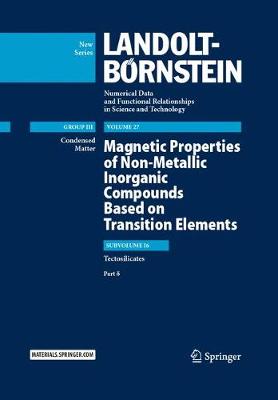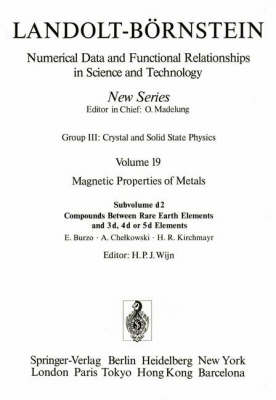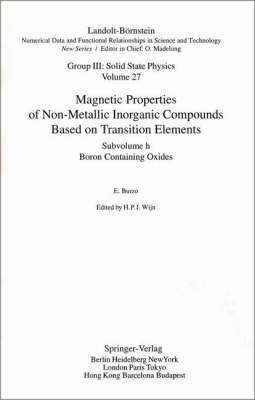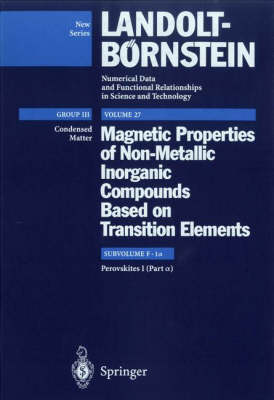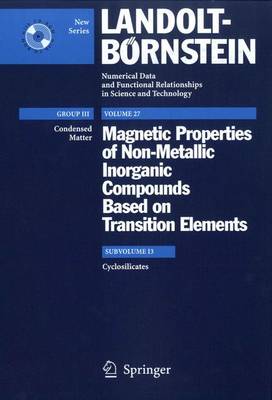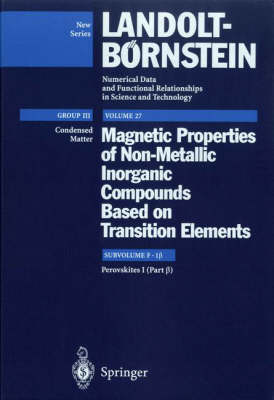Condensed Matter
7 total works
27I6
Magnetic Properties of Non-Metallic Inorganic Compounds Based on Transition Elements
by E. Burzo
19d2
27H
27F1a
27I4
The magnetic properties of silicates and phosphates are compiled in subvolume 27I. While subvolumes 27I1, 27I2 and 27I3 (already published) deal with orthosilicates, sorosilicates and cyclosilicates, respectively,. the present subvolume 27I4 deals with inosilicates. Further subvolumes are dedicated to other types of silicates (phyllosilicates, tectosilicates) and to phosphates. - Silicates are very complex systems, covering large classes of minerals as well as synthetic samples. Their crystal structure is discussed and atomic positions are given. In addition to magnetic properties, results of neutron diffraction studies, nuclear gamma resonance, nuclear magnetic resonance, transport properties, dielectric and optical data are reviewed.
27I3
The magnetic properties of silicates and phosphates are compiled in subvolume 27I. While subvolumes 27I1 and 27I2 (already published) deal with orthosilicates and sorosilicates, respectively, the present subvolume 27I3 deals with cyclosilicates. Further subvolumes are dedicated to other types of silicates (inosilicates, phyllosilicates, tectosilicates) and to phosphates. Silicates are very complex systems, covering large classes of minerals as well as synthetic samples. Their crystal structure is discussed and atomic positions are given. In addition to magnetic properties, results of neutron diffraction studies, nuclear gamma resonance, nuclear magnetic resonance, transport properties, dielectric and optical data are reviewed.
27F1b
